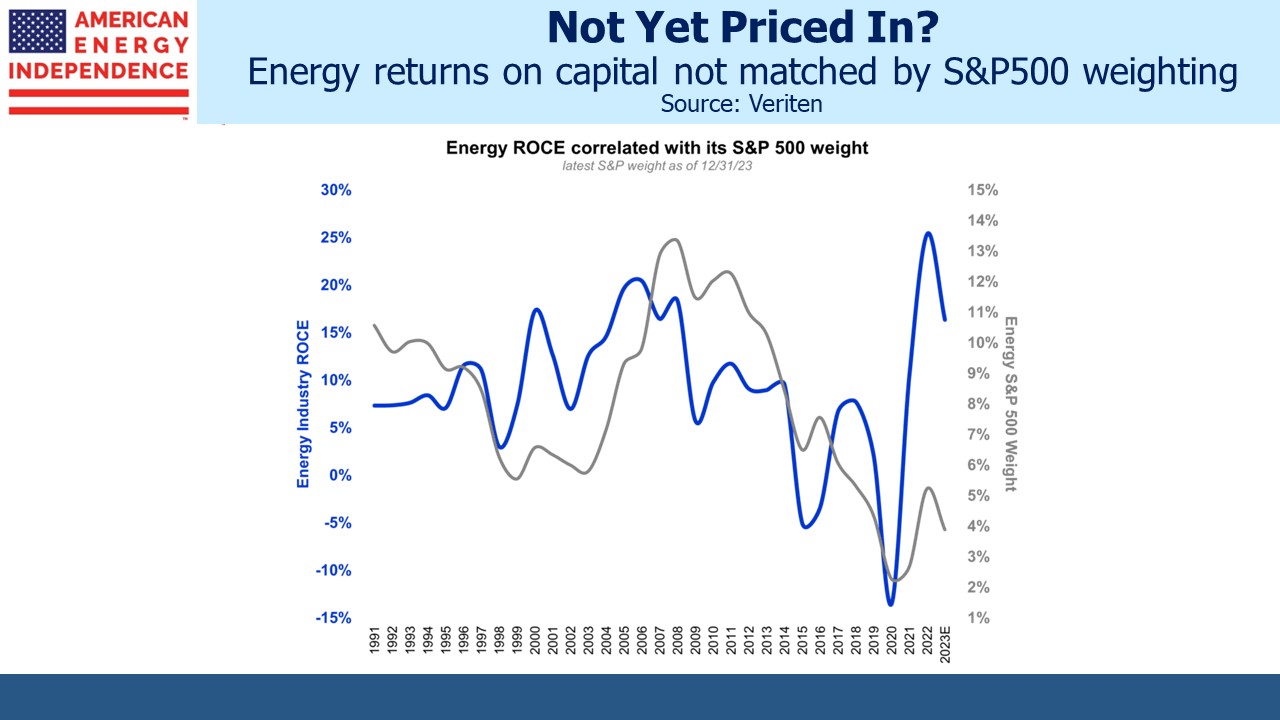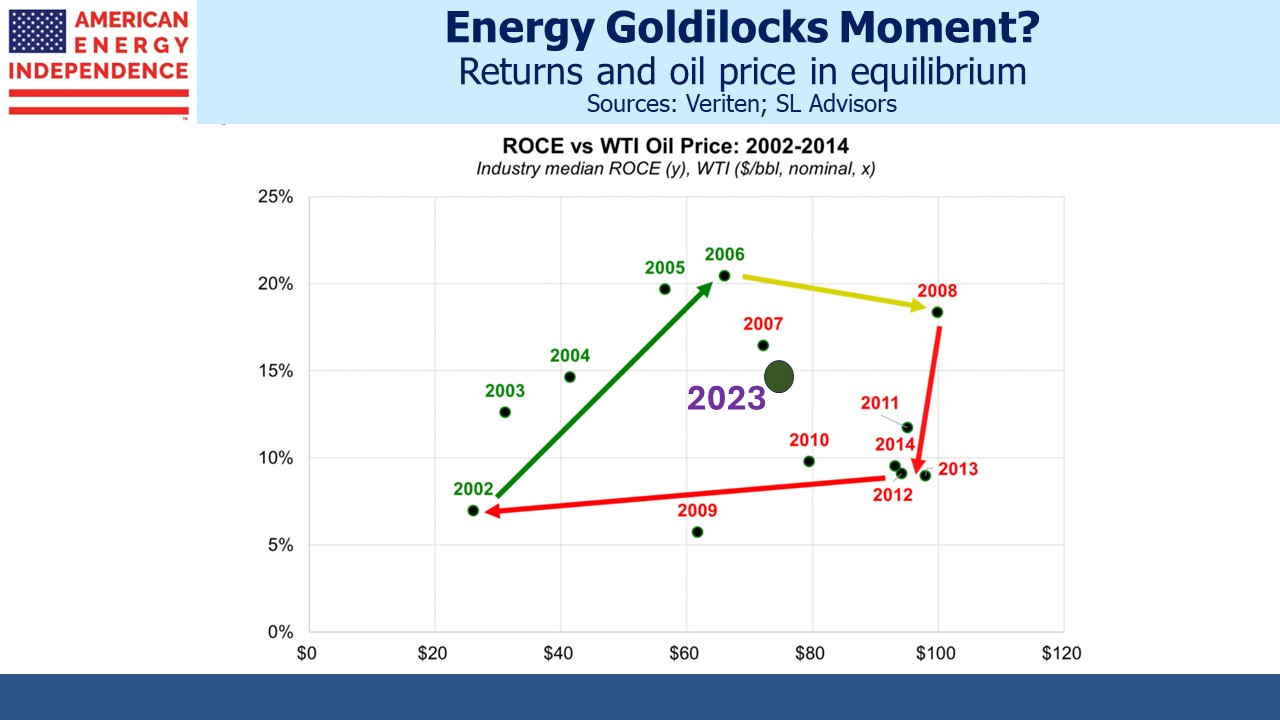Is Energy Becoming Less Cyclical?
It’s a question posed at every mid-cycle. Observers of commodity markets will often advise that the cure for low prices is low prices. Meagre profits reduce production, eventually curbing supply and driving prices higher.
2014 was the last cycle peak for energy. The shale revolution brought new US supplies of oil and gas onto the market, which upset the prior equilibrium. The downturn that followed had run its course by 2019 when the pandemic caused another leg down. But the industry embraced financial discipline, reducing capex and improving returns.
An essay by Veriten’s Arjun Murti makes the case that the current cycle of positive returns has many years left.
Murti’s favored metric is Return On Capital Employed (ROCE), and he notes that high ROCE generally corresponds with a high weight in the S&P500. Today energy remains at an historically low 4% market weighting, while returns are the best in over three decades. Murti believes that we’re a couple of years into a 10-15 year bullish cycle.
This theory will please energy investors. But another possible explanation is that energy companies are eschewing the normal boom/bust capex spending cycle that has long pervaded their industry. High ROCE would normally draw additional capital, but continued capital parsimony generally prevails.
Adjusted for inflation, energy capex is still less than half of the 2014 peak.
Uncertainty about the path of the energy transition has added to the caution practiced by many CFOs. Climate extremists stand ready to criticize the big publicly traded energy companies and file lawsuits to impede their activities.
The other day I was in a discussion sponsored by the Naples Council on World Affairs. One participant bitterly criticized Exxon Mobil for withholding internal research decades ago that showed the potential for fossil fuel combustion to lead to global warming. I reminded him that climate extremists have been at least as disingenuous. Many have preached that the world can run entirely on solar and wind, in willful disregard of science and the facts.
If energy companies have presented facts to suit them, the Sierra Club and wretched little Greta have routinely offered policy prescriptions grounded in fantasy. Alex Haraus and his anti-LNG TikTok crowd belong in the same gang of socialists trying to impose poverty and starvation on billions of people (see White House Adopts An Energy Policy Where Everyone Loses).
The coincidence of a high industry ROCE with low market weight could have another possible explanation – that we’re in a profitable equilibrium where high returns aren’t drawing dilutive capex because the reasons for financial caution are likely to persist.
This is illustrated in the “Quadrilateral of Death” which shows low returns leading to higher oil followed by higher returns, then lower returns caused by inferior capex and finally lower prices, returning to the starting point. But today we’re sitting in the middle of the quadrilateral, with decent returns and moderate prices. Perhaps it’s the sector’s Goldilocks moment – neither too hot nor too cold. The market has found a balancing point where excess returns aren’t self-destroying because of the continued uncertainty about the energy transition.
Oil and gas projects often require a decade or more to generate adequate returns. Forecasting demand and prices over such a long period is harder than in the past. Perhaps we are at the point of Happy Equilibrium.
If you read Murti’s research paper you’ll find it informative, and perhaps like me be mildly amused at the pretentious use of plural first person pronouns. For example, at SL Advisors we are bullish on energy infrastructure. But we can’t emulate Murti when he says “we … moved to Goldman Sachs in 1999” (emphasis added) or refers to “our career.” Smile and look beyond the misused pronouns.
In other news, the White House’s moratorium on new LNG approvals has drawn criticism from moderate Democrats in Texas, Alaska and California. They’re worried that there aren’t enough progressives in their districts to offset those employed in the energy sector or perhaps don’t see this as an effective way to lower emissions.
Germany’s extreme climate policies are part of the political discourse. Siegfried Russwurm, head of Germany’s main industry association BDI, criticized the government’s approach as “dogmatic” and “absolutely toxic.” The country is facing a recession driven by high energy prices. There’s no place for nuclear power and they want to derive 80% of their electricity from solar and wind by 2030, up from 41% in 2021.
Germany’s recent progress on reduced emissions has largely come from lower industrial output. China and other developing countries will easily make up for it.
We have three have funds that seek to profit from this environment:

